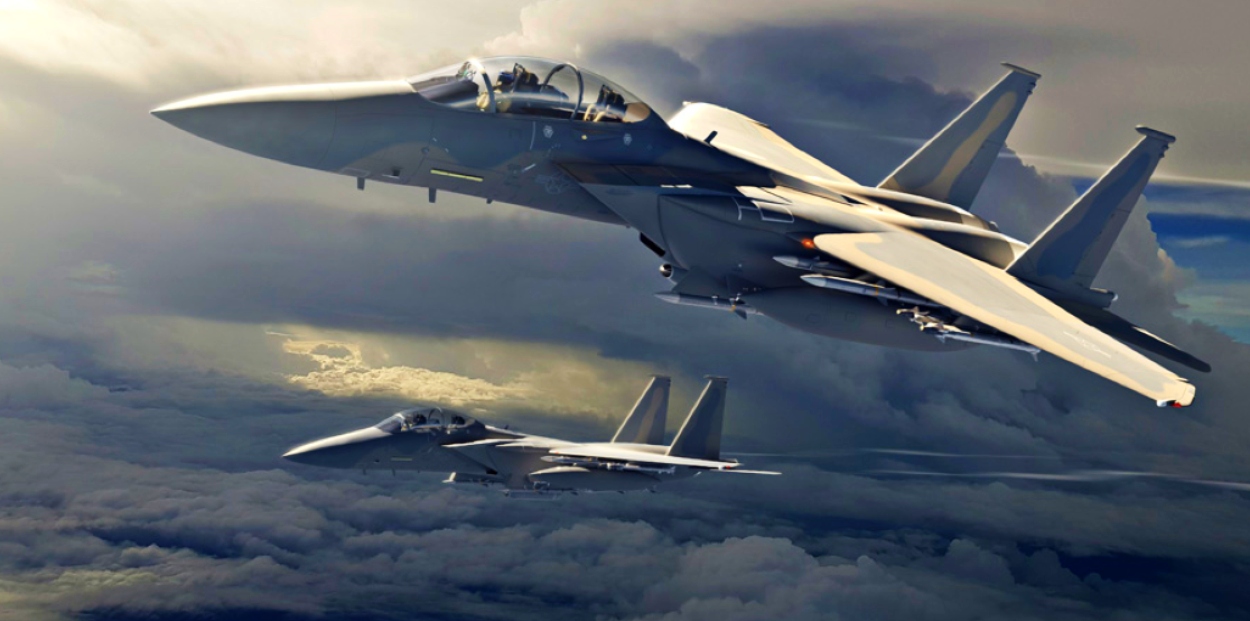In a push to enhance its Air Force, Indonesia has embarked on a significant modernization journey in recent years. The nation has committed to procuring diverse fighter jets, signaling a strategic move to bolster its defense capabilities.
However, as the ambitious modernization drive gains momentum, financial constraints will likely emerge as a potential stumbling block for the Southeast Asian nation.
For over three decades, Indonesia has contended with a persistent shortage and inadequacy of modern weaponry. This predicament was exacerbated by a combination of factors, including a severe monetary crisis and the imposition of an arms embargo in response to human rights violations in East Timor.
Despite lifting the embargo in 2005, its lingering effects have impeded the nation’s progress and resulted in Indonesia persistently encountering challenges as it strives to catch up with modernization efforts for its military.
Moreover, the obtrusive Chinese presence in and around the Natuna Islands further underscores the pressing need to modernize Indonesia’s armed forces.
The largest archipelago globally, spanning over 1.9 million square kilometers, the country places a substantial operational burden on the Indonesian Air Force (TNI-AU).
Thus, the acquisition of advanced military aircraft is widely perceived as strategically crucial in addressing the ongoing threat posed by China against the backdrop of the territorial dispute.
Acquisition Of Diverse Fighter Aircraft
Indonesia’s ambitious plan to modernize its air force by 2024 aimed to address the shortcomings in the Indonesian National Armed Forces (TNI) capabilities and capacities, establishing a modern force capable of serving as a strong deterrent.
As part of this modernization initiative, Indonesia initially finalized a long-sought deal with Russia to acquire 11 Su-35 Flanker-Es. This move was consistent with Indonesia’s tradition of procuring Western and Russian military equipment.
However, complications arose as the deal became a subject covered under the US Countering America’s Adversaries Through Sanctions Act (CAATSA), putting pressure on Jakarta to cancel the agreement with Moscow.
Washington also turned down Indonesia’s bid to secure the 5th generation F-35 Lightning II. As a result, alternative proposals were put forward, including the more budget-friendly options of F-16 Block 70/72 and F/A-18E/F Super Hornet.
In 2020, Indonesia’s defense minister also contacted Austria regarding the acquisition of 15 Typhoon Tranche 1 jets. However, the defense ministry opted not to purchase used aircraft.
Meanwhile, Jakarta later explored alternatives from France in response to the rejected F-35 request and the troubled Su-35 deal. After navigating through various phases of the fighter procurement process, Indonesia ultimately chose the Rafale and the F-15EX as its preferred fighter jets.
In February 2022, Indonesia made headlines by ordering 42 Rafale fighter jets. It is the second Asian nation after India to acquire these state-of-the-art French aircraft.
Indonesia’s plan to acquire Rafale fighter jets is being done in phases. In September 2022, the initial step materialized with an order for six Rafales.
Subsequently, on August 10, 2023, Dassault Aviation disclosed an agreement for an additional 18 Rafale jets in the plan’s second phase. This development brings the total number of ordered aircraft to 24.
In August 2023, Indonesia revealed its decision to procure F-15 Eagle fighter jets manufactured by US-defense company Boeing. The announcement included signing a memorandum of understanding to acquire 24 units of these US-made aircraft.
The F-15 jets acquired by Indonesia will be designated as F-15IDN and modeled after the F-15EX, which Boeing promotes as the most advanced iteration of the F-15.
Beyond the cutting-edge fighters, Indonesia also procured battle-proven but older French fighter aircraft like the Mirage 2000-5. The government’s decision to procure second-hand fighter jets faced opposition from both within the country and from experts, who criticized the move.
Despite the criticism, the government staunchly defended the purchase, characterizing it as a necessary stopgap measure to address the nation’s immediate security needs.
One of the key factors contributing to this decision is the observable decline in combat readiness within the Indonesian Air Force (TNI AU).
This decline is attributed to multiple factors, including the expiration of service life for many existing fighter jets, ongoing upgrades and overhauls/repairs of numerous aircraft, and prolonged delivery times for newly ordered aircraft.
In addition to procuring fighter jets, the country has entered into a strategic partnership with South Korea to collaborate on developing a next-generation supersonic combat aircraft called KF-21.
Financial Trouble
While the country has aggressively pursued fighter jet procurement programs, the reality is that it is grappling with various challenges that could potentially pose difficulties or serve as impediments in the ongoing procurement process.
Mainly, Indonesia has faced a persistent challenge in its defense budget, which has stagnated at approximately 0.8 percent of GDP for the past 15 years.
This figure is notably below the target outlined in its Minimum Essential Force Roadmap 2024, which advocates for an increase to 1.5 percent of GDP to address the country’s defense needs adequately.

In an article for the East Asian Forum, Fitri Bintang Timur and Jovita Komala pointed out that the plans to procure Rafale and F-15 jets present a notable budgetary challenge for Indonesia. The country may be compelled to enter into a long-term debt arrangement.
To mitigate financial strain, Indonesia could explore negotiation options akin to its previous dealings with Russia—employing a countertrade payment approach that involves a mix of cash and commodities, such as palm oil and rubber.
In recent months, Jakarta has also garnered attention in the news due to issues surrounding delayed payments related to its involvement in the KF-21 project with South Korea.
In 2016, Indonesia committed to contributing approximately 1.3 trillion won (US$958 million), around 20% of the multi-billion-dollar project, which entitled the country to receive a fighter jet prototype and technical assistance for local production.
Jakarta has paid 278.3 billion Won to date, with 991.1 billion Won overdue. Despite initial pledges to provide a payment schedule by June and later by October, Indonesia has yet to fulfill this commitment.
As of November 1, the failure to notify the Korean government about covering its project expenses has put their partnership at risk, confirmed by the Defense Acquisition Program Administration (DAPA), Seoul’s arms procurement agency.
The situation has escalated to the point where persistent payment delays have sparked concerns in South Korea. There is a growing belief that Indonesia’s commitment to the project may be waning, and the prospect of achieving a successful conclusion is becoming increasingly uncertain.
There are indications from some sources that South Korea is actively exploring alternative partnerships to replace Indonesia in the project potentially.
Furthermore, the challenges associated with procuring various aircraft, characterized by small quantities and different types and versions, pose significant hurdles in maintenance, repair, and overhaul.
Yet, many experts posit that the rationale behind acquiring both the F-15EX and Rafale lies in the potential benefits: the F-15EX could enhance diplomatic access to Washington for future acquisitions, while the Rafale offers unrestricted and superior capabilities for the Indonesian Air Force (TNI-AU).
The Indonesian air fleet boasts battle-tested 33 fourth-generation F-16 fighter jets, 11 Russian multirole Sukhoi Su-30MK2s, and five units of Sukhoi Su-27SKM.
Suppose the country successfully addresses its financial constraints and incorporates the F-15 and Rafale into its Air Force; in that case, it stands poised to become one of the region’s most advanced and powerful air forces.
- Contact the author at ashishmichel(at)gmail.com
- Follow EurAsian Times on Google News




